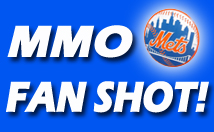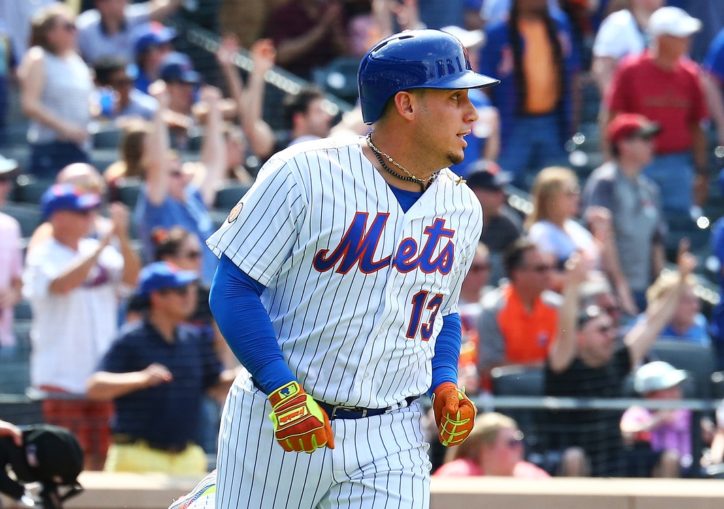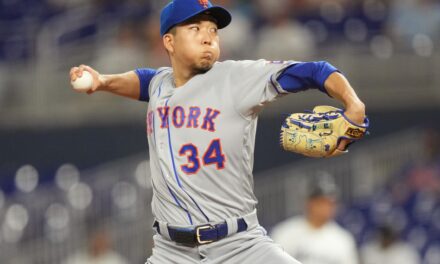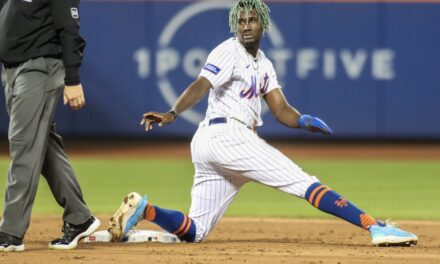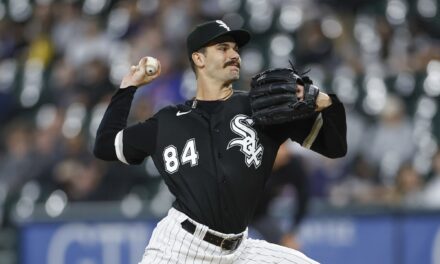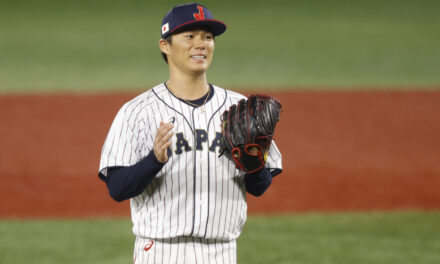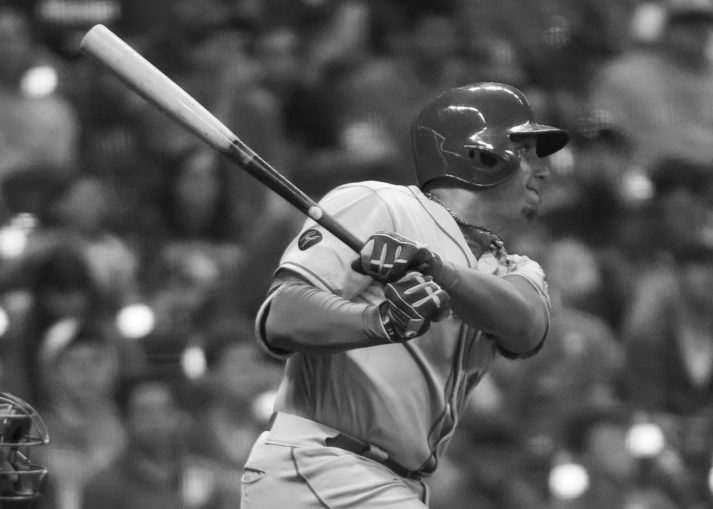
An MMO Fan Shot By @kengiffyjr
This wasn’t supposed to happen, especially after that magical start. This Trade Deadline was going to be fun. The time where us Mets fans scoured through the Sellers’ trade pieces, imagining hypothetical deals for the stretch run. Kelvin Herrera for Guillorme/Flexen? Wilson Ramos for Desmond Lindsay?
Sigh. That changed fast, and now the nightmare season has quickly turned the Mets into the primo Seller in baseball. When things are tough for the big ballclub, I tend to throw myself into the minors, and in this case, other teams’ prospect lists. The question has now changed: what interesting prospects can we get back?
I always love this time of year where you get to play GM. Way too much! Not enough! We’ll give you Brandon Drury!
For some time I’ve always wondered whether there was a way to simplify a prospects’ value and what would constitute a fair trade. Which launched me into this fun little analysis.
When digging in on prospects, I’ve always done what many of you probably do too: staying on top of all major publications lists, keeping up to date on performance & stats, reading other teams sites and blogs on favorites & sleepers, etc. But we’re not scouts and most of us don’t have access to any, so it’s always been a difficult task to evaluate from a general fan perspective.
Over the past few years, though, Fangraphs has helped simplify by putting a FV (Future Value) tag on each prospect.
These of course aren’t taken as gospel (Fangraphs values often differ from other publications, they tend to place lower FV’s on the very young guys until they’re more proven, and of course it’s tough to constantly be updating these FV’s for every prospect out there.)
But what it does do is give us a Constant number that we can use, and allowed me to dig in to see whether there was a correlation between the Prospect FV and another number: the projected WAR for the remainder of the contract.
A LOOK AT PAST TRADES
Of course it’s not as simple as drilling down into two numbers (other big factors are salary, the different markets for hitters/pitchers, their potential value in postseason, etc), but for the most part I realized that these trades all fell into a similar bucket.
Here’s a look at some of the notable trades over the past 2 seasons, with the latest flurry at the top. I’ve included a projected remaining WAR for the MLB player, the salary that the new team is on the hook for, as well as the prospect’s FV. Note that the projected remaining WAR for the MLB player is estimated at the time of the trade based on their recent trajectory (some of these of course did not come to fruition, see: Sonny Gray and AJ Ramos.)
-
- Manny Machado (3.0 WAR, 6 mil) for Yusniel Diaz (45 FV), Dean Kremer (40 FV), Zach Pop (40 FV), Breyvic Valera (40 FV)
- Brad Hand (4.5 WAR, 18 mil) and Adam Cimber (2.5 WAR, ARB) for Francisco Mejia (60 FV)
-
- Kelvin Herrera (1.5 WAR, 4 mil) for Blake Perkins (40 FV), Kelvin Gutierrez (40 FV), and one 35 FV.
- Jose Quintana (7.0 WAR, 33 mil) for Eloy Jimenez (60 FV), Dylan Cease (45 FV) and two 35 FV’s.
- Sonny Gray (8.0 WAR, 14 mil) for James Kaprielian (50 FV), Dustin Fowler (50 FV), Jorge Mateo (50 FV)
- Yu Darvish (1.5 WAR, 4 mil) for Willie Calhoun (50 FV) and two 35 FV’s.
- JD Martinez (2.0 WAR, 5 mil) for Dawel Lugo (40 FV) and two 35 FV’s.
-
- Ryan Madson (2.5 WAR, 11 mil) and Sean Doolittle (5.0 WAR, 18 mil) for Blake Treinen (4.0 WAR, ARB), Jesus Luzardo (40 FV), and Sheldon Neuse (40 FV)
And some Mets-specific*:
- AJ Ramos (2.0 WAR, 2 mil) for Merandy Gonzalez (40 FV) and Ricardo Cespedes (40 FV)
- Addison Reed (1.0 WAR, 3 mil) for Gerson Bautista (35 FV), Jamie Callahan (35 FV), and Stephen Nogosek (35 FV)
- Jay Bruce (0.5 WAR, 4 mil) for Ryder Ryan (35 FV)
- Lucas Duda (0.5 WAR, 3 mil) for Drew Smith (35 FV)
- Curtis Granderson (0.5 WAR, 4 mil) for Jacob Rhame (35 FV)
*Clearly Sandy & Co’s primary strategy last year was to try and bolster the pen. Knowing they weren’t going to get much back, they targeted upside bullpen arms. Note that relievers are often undervalued on the prospect end (rarely over 40 FV.) Bautista and Callahan have since been upped to 40 FV’s, and some of these guys remain promising (both Ryan and Smith.)
THE PROSPECTS TRADE VALUE CHEAT SHEET
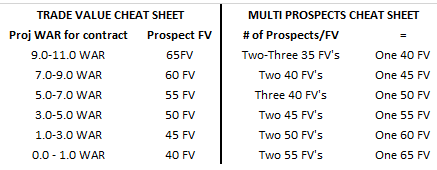
Upon crunching all the numbers above, I was able to drill down the correlation into one chart:
For the most part, all the trades above fall into these general valuations. Generally, once you get below the 45 FV range, often teams focus more towards quantity vs. quality, since most fall into a similar bucket, and having more lottery tickets are better than just one. As a result, I also created what I felt was needed, determining how many prospects of a certain FV value equals the value above it.
One other way to approximate this cheat sheet (as we’re often programmed to think in list form, be it top 100 overall or top 20 of a particular team) is the following:
- 65FV/70FV = Top 10 Prospect in Baseball
- 60FV = Top 10-20 Prospect in Baseball
- 55FV = Top 20-50 Prospect in Baseball
- 50FV = Top 50-125 Prospect in Baseball
- 45FV = Top 125-250 Prospect in Baseball, roughly top 5-15 guy in the org
- 40 FV = Top 250 + Prospect in Baseball, roughly top 15-30 guy in the org
SO WHAT CAN THE METS GET?
The Mets certainly are in an interesting situation. Using the data above, here’s their main trade chips’ approximate value:

Familia and Cabrera are of course definites to go. Familia has trended in the much better direction lately, but unfortunate that Cleveland grabbed Hand, as they looked like an optimal trade partner. Flores’ value is tough to pinpoint, as some teams may view him as an everyday player and other may see him more of a strong (and CLUTCH) bench piece.
I hope the Mets focus on quality over quantity this year. I also hope they try to be somewhat creative if possible, say packaging Familia/Cabrera together to get a bigger return.
Wheeler is the one I’m most interested in seeing. I go back and forth about whether they should pull the trigger on him, but if they’re offered an interesting 50FV, I can’t see them turning that down.
Focusing more specifically on that 40FV-50FV range, here’s some interesting names to keep an eye on the next few weeks from the BUYERS.
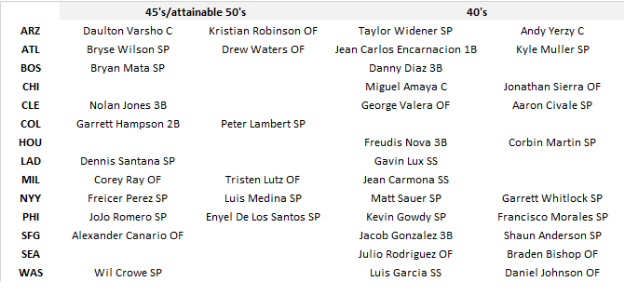
With the charts above, we’ll quickly and easily be able to play the math game to see whether the Mets FO did well or not, at least on paper at this current time. This should also help temper expectations on returns, as the Mejia’s of the world aren’t the names to be looking at with the three SP’s seemingly off the table.
While not the trade deadline we had hoped, this is still an exciting time, and a few solid returns from the guys above should vault the Mets back into the top half of the team prospect rankings. Enjoy the trade deadline all, hang in there.
*********
This was a Fan Shot by @kengiffyjr. Have something you want to say about the Mets? Send your article to [email protected] or use this Contact Form. Or ask us about becoming a regular contributor.
